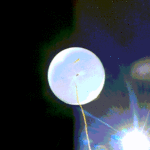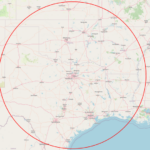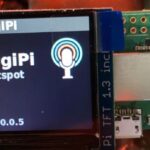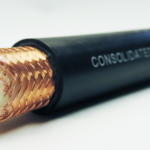By Chip Coker KD4C
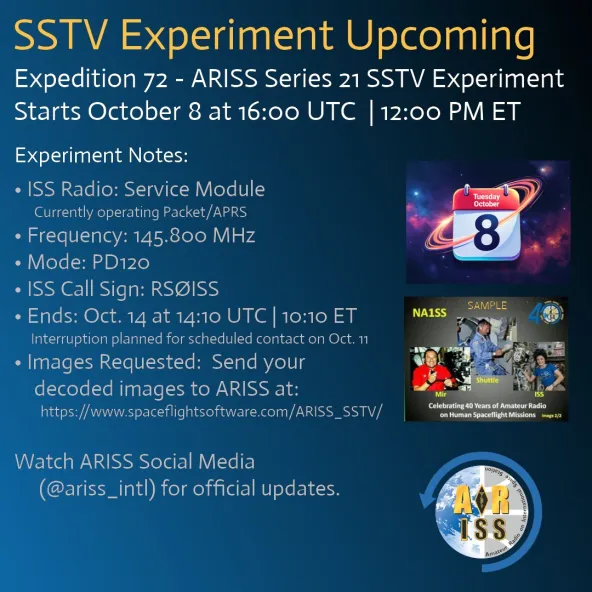
After an extended outage due to equipment failure, the ability of the ARISS (Amateur Radio on the International Space Station) to send SSTV is back (hopefully)! At long last, the ARISS Team is conducting tests of the SSTV system for the next few days. Welcome Back SSTV!
The test is scheduled from 8 Oct 11am to 14 Oct 9am (all times CDT), but there may be changes to the schedule (and a planned outage on the 11th).
The International Space Station (ISS) orbits around 250 miles overhead and the orbit period is around 90 minutes, which means that you can usually hear a couple of passes per day, and since the ISS is in Low Earth Orbit (LEO), you can hear it with a handheld and usually don’t need any special antennas (although they certainly help). And one of the easiest ways to hear the ISS is when they are operating Slow Scan Television (SSTV).
You can go to www.amsat.org/track/ or https://spotthestation.nasa.gov/ and find when the ISS will be overhead. Passes that have the highest “Max Height” will be the best (lowest noise) and longest (you will need a relatively long pass to get a full SSTV frame).
For SSTV from the ISS, set your 2M FM receiver to 145.800 wideband FM. You can use your home 2M FM radio (best) or you can use a mobile or HT. Better and higher antennas will work better. The best antenna for satellite reception is circular polarization because there is some polarization-related fading, but a simple vertical will work as well. Doppler correction on FM usually isn’t necessary.
Once you have your pass schedule, you need to figure out how to receive the SSTV image. If you have a 2M radio with audio connected to a computer (for things like Winlink or FLdigi) then you just need an application that will decode SSTV. If you use windows, the most popular is MMSSTV (free) and for linux or raspberry pi the most popular is QSSTV (also free). For just receiving images, minimal configuration is required and there are lots of youtube tutorials on how to set them up.
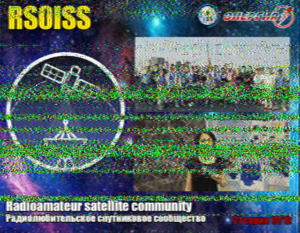
Images are transmitted in PD120 format (approx 120 seconds per image) and there’s a different image every 3 minutes, so that means 120 seconds of image and then 60 seconds of silence. A longer (higher) pass should allow you to receive 2 images if the timing is right, so it will take several passes to receive the entire set of images (usually 10-12 per event).
Don’t have a connected computer? You can use your phone! There are SSTV apps for both iPhone and android phones. Just install the app and hold the phone next to the speaker on your HT or mobile radio. It couldn’t be easier!
If you’re successful in capturing an image or two, please share on discord or in groups.io. There is also a place to post on the ARISS blog.
Here are the current pass predictions for Oct 8-14. The passes that are highlighted will be easiest to copy (higher than 40 degrees elevation).
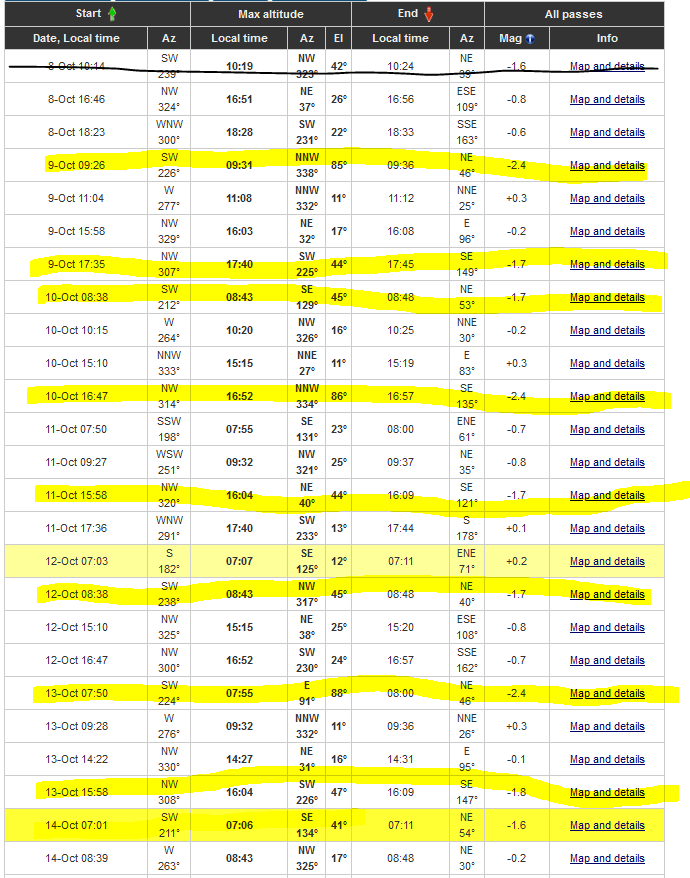
_ . . . _
Resources:
You can get predictions for the ISS pass times at https://www.amsat.org/track/ and see the real-time track at https://isstracker.pl/en.
ARISS SSTV Blog https://ariss-sstv.blogspot.com/
Useful SSTV info and links https://amsat-uk.org/beginners/iss-sstv/
You can see images that have been received (and submit your own!): https://www.spaceflightsoftware.com/ARISS_SSTV/index.php
Helpful YouTube on Receiving SSTV from ISS with MMSSTV and smartphones: https://www.youtube.com/watch?v=YgY3saXXTXs

